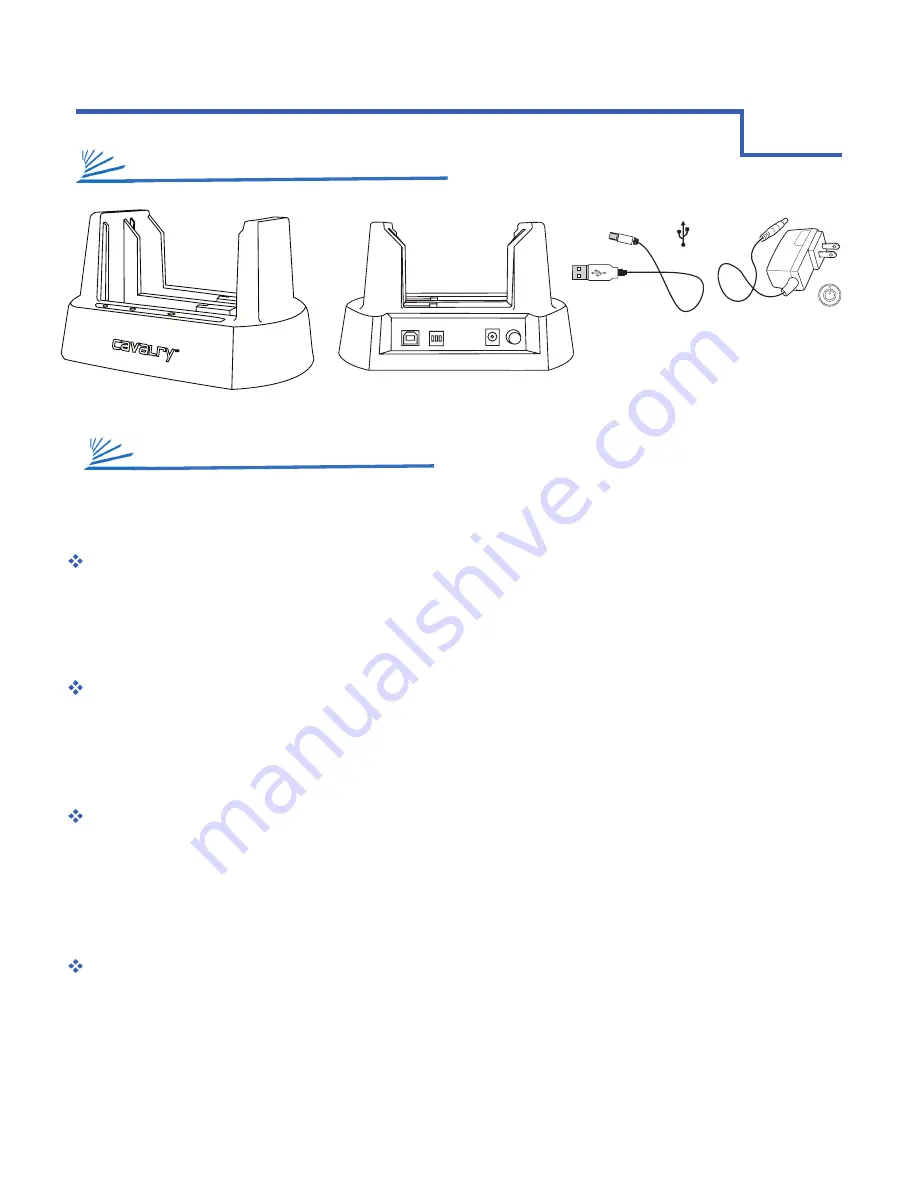
EN-CAHDD2B-D
2
1. Power LED
2. HDD Status LED
3. USB 2.0 Interface Port
4. RAID Configuration Switches
5. DC Power Input
6. Power Switch
1
2
3 4
5 6
This really isn’t a RAID mode at all. JBOD simply allows you to see each drive separately within either or both bays. There is
no performance advantage to JBOD. But, it is very useful when transferring data from one drive to the next; or when you need
to error-check individual drives within your disk management utility. Plus, JBOD does not change the file system the way the
other modes do. This makes it a safe bet if you are unsure of what mode you should use.
JBod Mode
= Just a Bunch Of Disks.
RAID modes and terminology can be a little confusing to the un-initiated. Rather than try to explain the exact mechanisms that
underlie each mode, we will describe each one in terms of what they can do. Then, you can carefully choose the appropriate
mode for your application.
This mode basically duplicates all of the data from one drive onto the next. In other words, it “mirrors” the source drive. This
is by far the preferred mode for a RAID array. It provides security for all of your source-drive’s data in the form of a true
automatic backup. The catch is that your storage capacity is limited to that of the source drive. You will also need to verify that
each disk you intend to use in this array is the exact same make and model.
raid 1 Mode
= Mirrored Drives.
This is only recommended for those people who absolutely must have the absolute maximum in transfer speed and storage
capacity. This mode is easily capable of exceeding the speed limit of USB 2.0 (roughly 60 MB/s). Likewise, it gives you access
to the full capacity of both disks combined. So, what could possibly be bad about that? The problem is this: if one drive dies,
all of your data will be lost. In order to safely use RAID 0, you’ll need a third separate drive in which to backup your critical
data. You will also need to verify that each disk you intend to use in this array is the exact same make and model.
raid 0 Mode
= Striped Drives.
This also is not exactly a RAID array. Spanning joins two drives into one big disk that has the capacity of both disks combined.
Unlike RAID 0, there is no speed increase from BIG mode. You can also use different sized disks in a Spanning array. But as
with RAID 0, if one drive fails, the entire BIG volume will be lost, along with any potential data. You’ll probably want a third
separate drive in which to backup your most critical data.
Spanning
= BIG Drives.
PRODUCT PART IDENTIFICATION
1
CHAPTER
GETTING STARTED
DESCRIPTION OF RAID-MODES





























